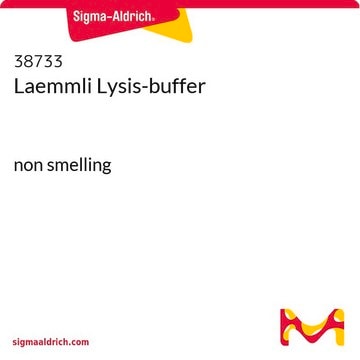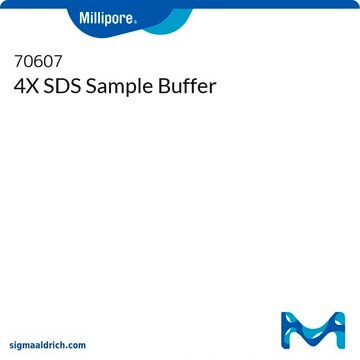PCG2004
TruPAGE™ Precast Gels
4-20%, 10 x 10cm, 12-well
Sinonimo/i:
Precast Gels for SDS-PAGE, Precast Polyacrylamide Gels
About This Item
Prodotti consigliati
Descrizione
for use with Life Technologies XCell SureLock™ XCell I™, XCell II™ Mini-Cell and Bolt™ Mini Gel Tank
Durata
24 mo. at 2‑8 °C (from the date of manufacture)
Confezionamento
box of 10 ea
Concentrazione
4-20% polyacrylamide
Cassetta largh. × lungh.
10 cm × 10 cm
Spessore gel
1 mm
Dimensione pozzetto × volume
12 wells × 35 μL
Compatibilità
for use with Lonza Ltd PAGEr™ Minigel Chamber
Temperatura di conservazione
2-8°C
Cerchi prodotti simili? Visita Guida al confronto tra prodotti
Applicazioni
Caratteristiche e vantaggi
The precast polyacrylamide gels for SDS-PAGE come in two gel cassette sizes (10 x 10 cm and 10 x 8 cm) for increased equipment compatibility. TruPAGE gels have extra tall wells to prevent lane-to-lane overflow and come in two well formats (12-well and 17-well). TruPAGE gels are available in several different gel concentrations (10%, 12%, 4-8%, 4-12% and 4-20%) to provide desired resolution of proteins of any size. Please refer to the migration chart to select the appropriate precast gel and running buffer combination for your experimental needs. Only use TruPAGE formulated buffers when running TruPAGE gels to ensure optimal results and reproducibility. Please review the TruPAGE Technical Bulletin for buffer formulation recipes and general running guidelines.
- Long Shelf Life - 2 years from the date of manufacture when stored properly.
- High Performance - Extended full length resoling gels provides improved resolution.
- Durable - Stronger than standard polyacrylamide gels, preventing tearing during post-electrophoresis processing.
- Extra Tall Wells - Eliminate sample spill over and accommodate larger sample loading volumes with well teeth that protrude above the back plate of the gel cassette.
- Excellent Compatibility - TruPAGE gels are compatible with the popular gel running equipment, including Sigma-Aldrich′s Dual Run Tank (Z741768) and other manufacturers like Life Technologies, Bio-Rad®, Lonza®, Hoefer®, CBS Scientific as well as others, allowing you to continue using the equipment you already own.
- Fast - Run times as low as 30 minutes.
- Great Value - Gels and buffers offer a cost-saving alternative without sacrificing performance and experimental integrity.

There is no tape to remove. There is also no comb to remove, which prevents torn or bent wells. Instead, the cassettes lock well fingers in place.
Note legali
Configurato per
Codice della classe di stoccaggio
12 - Non Combustible Liquids
Classe di pericolosità dell'acqua (WGK)
WGK 2
Punto d’infiammabilità (°F)
Not applicable
Punto d’infiammabilità (°C)
Not applicable
Certificati d'analisi (COA)
Cerca il Certificati d'analisi (COA) digitando il numero di lotto/batch corrispondente. I numeri di lotto o di batch sono stampati sull'etichetta dei prodotti dopo la parola ‘Lotto’ o ‘Batch’.
Possiedi già questo prodotto?
I documenti relativi ai prodotti acquistati recentemente sono disponibili nell’Archivio dei documenti.
Il team dei nostri ricercatori vanta grande esperienza in tutte le aree della ricerca quali Life Science, scienza dei materiali, sintesi chimica, cromatografia, discipline analitiche, ecc..
Contatta l'Assistenza Tecnica.






